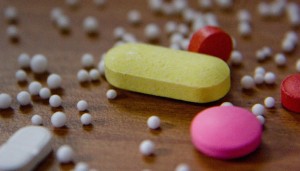(this blog post was written by group #4 as a writing assignment) Our goal for this week’s lesson was to double check that the genome we sequenced is, in fact, the organism we are interested in. After uploading our sequences up to RAST last week, we found out the results and were able to look …
Here’s the report from Day 1 of the 5th annual Microbiology of the Built Environment meeting in Boulder, CO. Following my summary of the talks is a Storify of all the tweets from the day. The first talk of the day was by Ulla Haverinen-Shaughnessy from the University of Eastern Finland whose talk was entitled …
The winners of the Bill & Melinda Gates Foundation Global Grand Challenges Round 16 were announced recently. Among the challenge topics included in this round of competition was Novel Approaches to Characterizing and Tracking the Global Burden of Antimicrobial Resistance. The Gates Foundation made six awards in this topic area: Christopher Mason of Cornell University (USA) will generate a global …
Our group here at the City University of Hong Kong is interested in looking at microbial communities in built environments (BEs) of various sorts, including subways and residences. We have recently come up with a review article describing how outdoor and indoor occupants help shape a potential global BE “pan-microbiome,” the microbiome that encompasses BEs around the globe, which …
In the context of an Alfred P. Sloan Foundation grant to the UNITE database to improve the support for fungi in the built environment, a workshop centered on public fungal ITS (barcode) sequences from the built environment was organized in Gothenburg, Sweden on May 23-24, 2016. Specifically, the ~40 physical and remote workshop participants sought …
Microbes in the house Urban Dust Microbiome: Impact on Later Atopy and Wheezing – Christina Tischer – Environmental Health Perspectives (OA) Investigations in urban areas have just begun to explore how the indoor dust microbiome may affect the pathogenesis of asthma and allery. We aimed to investigate the early fungal and bacterial microbiome in house dust …
This is a guest post from Dr. Koh Tse Hsien who maintains the blog Microcosm and also is in the Pathology Department at Singapore General Hospital. Clinical microbiology and social media We are a diagnostic laboratory that provides bacteriology services to a busy 1600-bedded tertiary care hospital in Singapore (http://www.sgh.com.sg). We receive about 360,000 specimens a year. …
(this blog post was written by group #3 as a writing assignment) Last week in class we were introduced to genome assembly and validation by using an open-source bacterial genome assembly program A5-miseq. This program produces high quality genome assemblies by automating processes such data processing, error correction, contig and scaffold assembly, and final verification. …
(This post was written by group #2 as a writing assignment) Since we were about half way through this quarter, the activity we did this past week was to summarize all the experiments we have performed so far, list the consumable materials that were used, and any questions or concerns that may have arisen during …
Got pointed to this by Jessica Green on Twitter @davidacoil @phylogenomics: join us over lunch tomorrow! https://t.co/1ydjPYTDsJ – Jessica Green (@JessicaLeeGreen) May 27, 2016 //platform.twitter.com/widgets.js Looks like a great idea. More detail here: Wikipedia:Meetup/Eugene/Microbiome2016 – Wikipedia, the free encyclopedia From their site: The Biology and Built Environment Center is hosting a Microbiome Science Wikipedia Edit-a-Thon on May 27th, …



